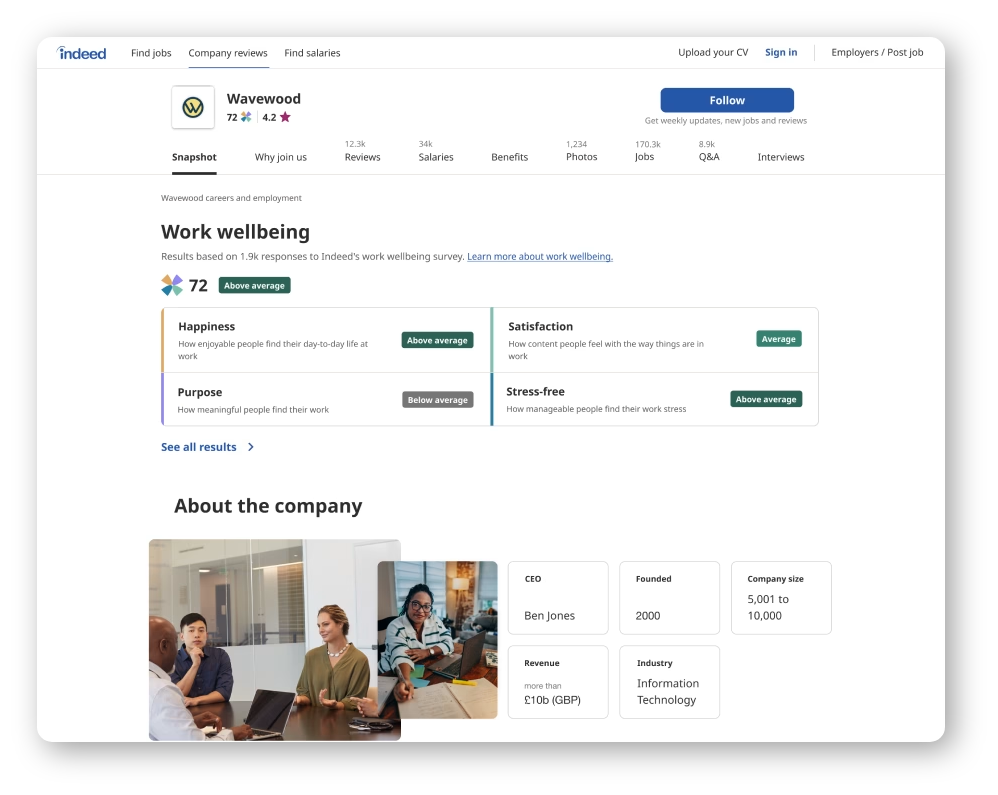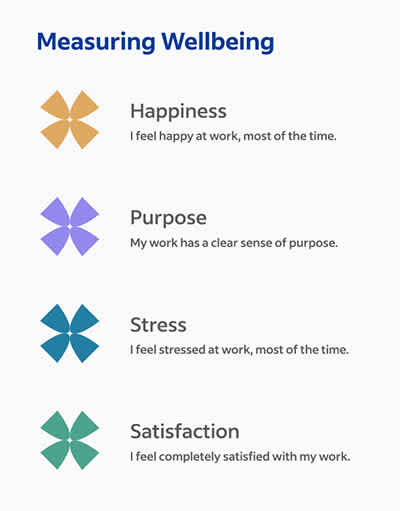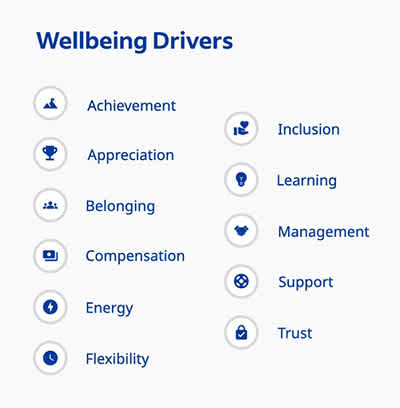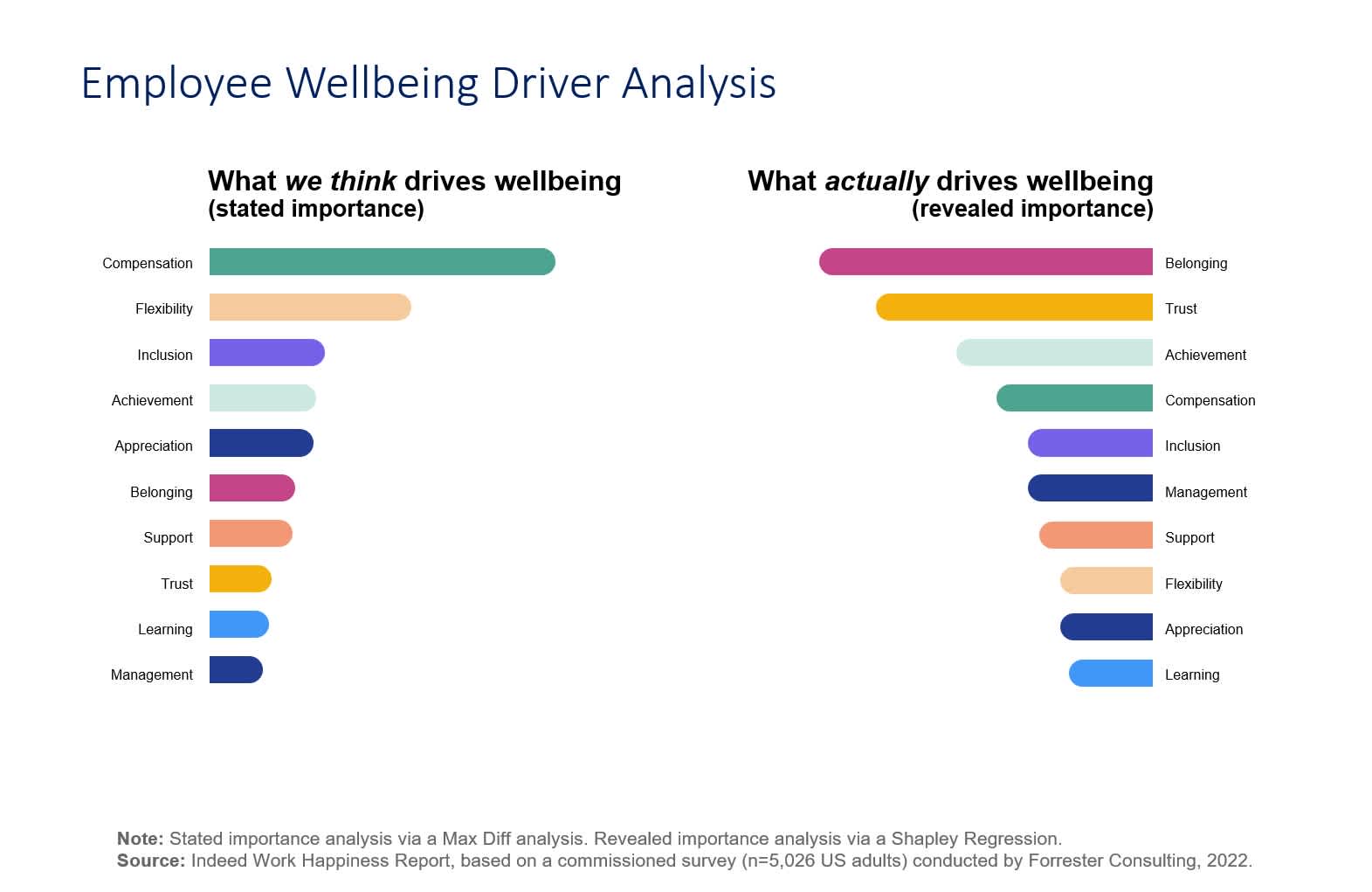Professor Jan-Emmanuel De Neve of Oxford University’s Saïd Business School collaborated with Indeed in developing the Work Wellbeing Score, which was officially launched in April 2023. Jan has revealed a series of intriguing findings based on analyses of the Work Wellbeing Score and relevant data, including the correlation between wellbeing at work and corporate performance, as well as the predictability of future stock prices extrapolated from work wellbeing scores.
In an interview conducted during his visit to Japan in late September, Jan spoke about what brought him into the collaboration with Indeed, what he has learnt through that collaboration so far, and what he wants to achieve next.

Oxford Professor Jan-Emmanuel De Neve
Indeed's Valuable Data Opens Infinite Possibilities for Work Wellbeing Research
“It all started in 2019 when I gave a speech at a global HR forum,” Jan recalls. “Professor Sonia Lyubomirsky, an American psychologist on the same panel, said to me: ‘Jan, I really need to put you in touch with the Indeed people so that they get to know you, because we’re starting a very exciting project with much potential around measuring workplace wellbeing through crowdsourcing on the Indeed platform.’
At that time, Sonia and the Indeed team were just starting to determine which questions and items would be interesting, and I think they found it helpful to have my knowledge and experience as an economist who had designed survey items and analyzed vast amounts of data,” Jan continues. “She also showed great interest in all my past research on work wellbeing. I had my first meeting with Indeed at the end of 2019, and from there the most exciting and fruitful research in my career began.”
As a researcher, Jan says: “What I find most exciting is the data set with the world’s largest scale in both breadth and depth, which can be obtained from Indeed’s platform that welcomes an astonishing 350 million unique visitors every month*1. Our survey on Indeed received over 17 million responses*2 in a very short period of time, and that number is still growing.
Thanks to this data, for the first time, it is now possible to compare almost all major companies side by side*3, and to see the degree of influence and correlation between each of the four key indicators and eleven drivers of work wellbeing,” Jan adds. “This has crucial implications for the academic community, since we believe that new insights will be generated from the studies using this data for years to come. If these insights are useful to job seekers and companies, Recruit Group—including Indeed—can make a significant contribution to society. This initiative brings about a win-win outcome for academia, job seekers, companies and Recruit Group.”
*1 Comscore, total number of visits, September 2022
*2 From 2023 Indeed.com data, based on the number of survey responses globally
*3 Only in countries where the service is available
Measuring Emotions in a Structured Manner Leads to Specific Actions
Indeed’s Work Wellbeing Score measures four key indicators of work wellbeing: happiness, purpose, satisfaction, and stress. On an employer’s Indeed Company Page, labels representing five levels (Low, Below Average, Average, Above Average, and High) for each of those four key indicators appear, as well as overall evaluation with the label and a score out of 100.

The Work Wellbeing Score is a composite metric on Indeed Company Pages
Typical pulse surveys tend to ask only what employees think about their workplaces, such as motivation and engagement, based on the company’s desire to take concrete measures. What makes the Work Wellbeing Score unique is that it also measures how individual employees feel about their workplaces.
The inspiration for this came from a census conducted by the UK Office of National Statistics. They asked questions such as “Are you happy?” and “Do you feel stressed or anxious?” and translated them into the context of the workplace.

The four key indicators of work wellbeing
The questionnaire for Indeed’s Work Wellbeing Score is designed to include questions on eleven key drivers of the four key indicators, which explain why people feel happy or stressed.
“This structure to separate the eleven drivers from the four key indicators is something I insisted on,” Jan states, “and I’d say this was my biggest contribution as a researcher in the development of the Work Wellbeing Score. Looking at all fifteen items at the same level will not give you any suggestions, but once you conceptually distinguish between outcomes and drivers, ideas come to you like, ‘Addressing this driver can improve this outcome.’ This will help people including CEOs, HR managers and policymakers decide where to invest their budgets and resources.”

The eleven drivers that influence the four key indicators of work wellbeing
According to Jan, their analysis has revealed that of the eleven drivers, a sense of belonging exerted the strongest influence on work wellbeing. “On the other hand, a separate awareness survey of managers revealed that compensation was thought to have the greatest influence, and that a sense of belonging was not emphasized at all,” he notes. “This indicates that a big discrepancy exists between managers' intuition and reality. In the future, if internal resource allocation is optimized in line with the actual situation, there is a good chance that work wellbeing will improve.”

Among the eleven drivers, a sense of belonging has the strongest influence on work wellbeing
Making the Work Wellbeing Score a Global Standard of Human Capital Indicator and Nudging Companies to Act Accordingly
The Work Wellbeing Score also revealed a correlation between workplace wellbeing and company performance. Furthermore, the score can also help predict stock market performance.
There are six pathways through which an individual employee’s work wellbeing drives business performance: productivity, creativity, health, relationships, recruitment, and retention. “For example, when employees feel good at work, their productivity increases,” Jan reports. “Retention rates also rise, which translates into cost savings for companies. Your workplace becomes more attractive and attracts more talent as well.”
These factors have a positive effect on business profits over the medium to long term, leading to the predictability of stock prices. “Considering these factors, it should make sense that there is a correlation between work wellbeing and business performance and stock prices,” Jan says. “In addition, we’ve already proven in another study—which took us seven years—that this is a causal relationship originating from work wellbeing.”
These results have been widely covered in the media, including the Financial Times, and is also a hot topic in academia. Above all, however, it is attracting a lot of attention in the business world, especially in the financial industry. Up until now, Jan says, wellbeing has been subjective and difficult to measure, and has not been considered crucial in evaluating corporate value, but this situation is beginning to change.
First, starting this year, the rating agency S&P Global began requiring companies to report on items similar to the Work Wellbeing Score. “In addition, myself, Indeed and Recruit Holdings have submitted letters to the International Sustainability Standards Board (ISSB) of the IFRS Foundation, requesting that the Work Wellbeing Score be adopted as a standard of human capital indicator,” Jan notes.
If work wellbeing scores become a global standard, investors, rating agencies and even corporate CEOs will no longer be able to ignore work wellbeing as a factor. “Although 87% of CEOs believe that wellbeing in the workplace leads to a competitive advantage,” Jan says, “survey results show that only 35% of them actually prioritize it as a strategic focus*4. I’d like Recruit Group to nudge CEOs around the world to walk the walk and seriously improve work wellbeing. I believe this will lead to more people working happily and a better world.”
*4 Source: Harvard Business Review, “Cultivating workforce wellbeing to drive business value”; research conducted in Q1 2020.

Professor Jan-Emmanuel De Neve
Saïd Business School University of Oxford
A professor at Oxford University's Saïd Business School, Jan specializes in economics and behavioral science, and also serves as the director of the university’s Wellbeing Research Center. He’s also known as the co-editor of the “World Happiness Report,” and his research on work wellbeing is frequently covered in academia and the media.